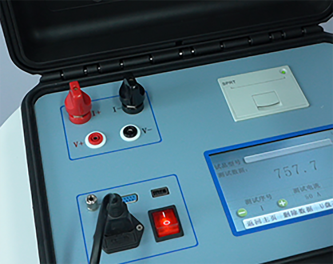 English
English


transformer bushing testing
Transformer Bushing Testing Ensuring Reliability and Safety
Transformer bushings are critical components in electrical systems, serving as the interface between the transformer and the external environment. Due to their pivotal role in maintaining electrical insulation and facilitating the transmission of electric current, the testing of transformer bushings is essential to ensure their reliability and safety.
Transformer bushings are typically made from materials such as porcelain or polymer, which provide electrical insulation and mechanical support. Over time, these components can be subjected to various stresses, including electrical, thermal, and mechanical loads. Consequently, regular testing and maintenance are necessary to identify any potential issues before they lead to costly failures or safety hazards.
One of the primary tests conducted on transformer bushings is the power factor (or dissipation factor) test. This test assesses the dielectric properties of the insulation materials. A higher dissipation factor may indicate moisture ingress, contamination, or degradation of the insulating material, which can compromise the bushing’s reliability. By monitoring changes in the power factor over time, utilities can predict potential failures and perform preventative maintenance.
transformer bushing testing

Another important testing method is the insulation resistance test. This test measures the resistance of the bushing insulation to determine its effectiveness in preventing electrical leakage. A drop in insulation resistance may signal deterioration of the insulating material, necessitating further investigation or replacement.
In addition to electrical tests, physical inspections play a critical role in bushing testing. Inspectors examine for visual signs of wear, such as cracks, chips, or discoloration. They also assess the conditions of the sealing mechanisms to ensure that they are intact and functioning correctly. Regular physical inspections, combined with electrical testing, provide a comprehensive assessment of the bushing's condition.
Furthermore, advanced diagnostic techniques such as partial discharge (PD) measurement and sweep frequency response analysis (SFRA) are increasingly used in transformer bushing testing
. These methods allow for the detection of internal faults and anomalies that may not be apparent through standard testing protocols.In conclusion, transformer bushing testing is a vital part of maintaining the integrity and safety of electrical systems. By employing a combination of electrical testing, physical inspection, and advanced diagnostic techniques, utilities can effectively monitor the condition of transformer bushings. This proactive approach not only extends the life of the equipment but also enhances the overall reliability of the electrical grid, ensuring safe and efficient power transmission. Regular testing is a small investment compared to the costs associated with transformer failures and outages.
-
Differences between open cup flash point tester and closed cup flash point testerNewsOct.31,2024
-
The Reliable Load Tap ChangerNewsOct.23,2024
-
The Essential Guide to Hipot TestersNewsOct.23,2024
-
The Digital Insulation TesterNewsOct.23,2024
-
The Best Earth Loop Impedance Tester for SaleNewsOct.23,2024
-
Tan Delta Tester--The Essential Tool for Electrical Insulation TestingNewsOct.23,2024





